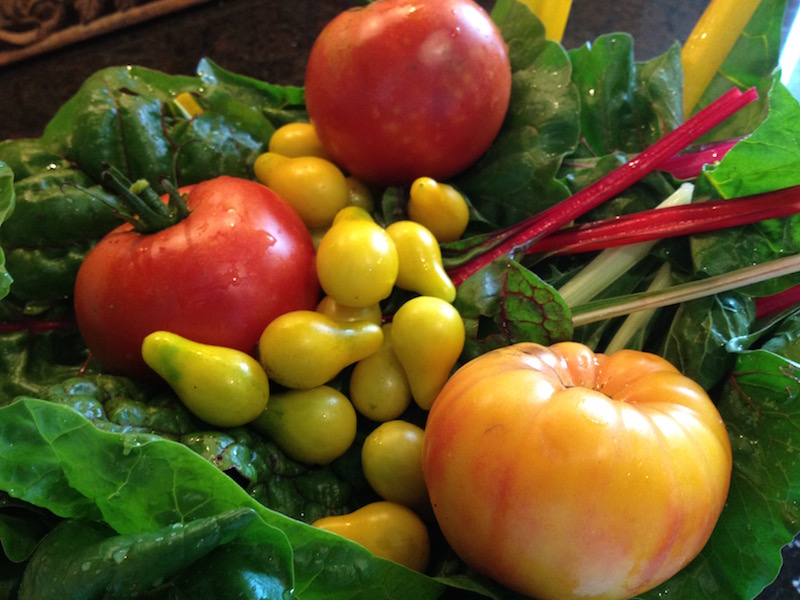Trying your hand at tomatoes this summer? While some first-time farmers shy away from the seemingly more complicated crops like corn or beans, nearly every newbie is willing to stick a few tomato plants in the ground and hope for the best.
If you’ve never grown tomatoes before (or you have but you’re still learning), here are some quick tips for success:
Select a spot at the back of the garden. Tomatoes are among the tallest plants, along with trellis peas and beans. They should be placed behind smaller plants, at the northernmost point, so that they don’t block sunlight from the lower-growing vegetables. Make sure there’s enough space for each plant to have 2-4 feet between them (depending on whether they’re determinate or indeterminate varieties, and caged versus staked plants).
Tomatoes should not be planted in the same soil for more than two years. If you have a large parcel of property, then you can simply move your tomato plants east or west of where they were. However, if like ours, your yard is modestly sized, then there may be no other sunny area to put them. If that’s the case, relocate some soil from another part of the yard, or dig out the soil that’s there and replace it with some fresh organic topsoil brought in from outside.
Be sure the growing spot is well-fertilized. Tomato plants soak up a lot of nutrients from the soil in order to produce those luscious, red-fleshed fruits we can’t get enough of. You’ll want to supplement with plenty of organic composted soil, organic manure, leaf mulch, and a 3-4 inch topper of straw or grass mulch for added insulation. Crushed egg shells deliver the extra calcium needed for a good yield of tomatoes. Keep in mind that fertilizers which are too rich in nitrogen can actually prevent your tomato plants from bearing fruit.
Don’t sow tomato seeds directly in the garden. Instead, start the plants indoors first and plant in the ground after the danger of the first frost is over. If growing your own plants is too much for you just yet, simply pick up a few healthy-looking tomato plant specimens from your local nursery and put those in. In NJ, you can safely plant your tomatoes after the ground warms up, which is typically around May 15.
Plant them deep. When planting tomato plants, you can actually bury them as far as 2/3 of the way into the ground. This is because any part of the stem will produce roots if placed beneath the soil. The more roots, the more water and nutrients taken in, and the heartier your plant will be. Add some crushed eggshells to the hole before you put the plant in, to ensure the most fruit production.
Water well. Keep tomato plants evenly and well watered. They require up to 1 inch of water per week. Water at the roots (drip irrigation works well).
Plant in the early evening. This will give the plants some time to acclimate before the scorching hot summer sun is upon them.
Don’t procrastinate planting. Some of the bigger varieties of tomatoes can take as long as 70-90 days to mature. If you run into frosty weather at the end of the summer or early fall, that can put the kaibosh on your long-awaited crop.
Train your tomatoes. For disease and pest-free plants, keep tomato vines from trailing on the ground where fruit will rot from excess moisture and stems can grow mold and fungi. Stake your tomatoes or use tomato cages to train plant growth upward. For more info on this, read “Training Your Tomato Plants.”
